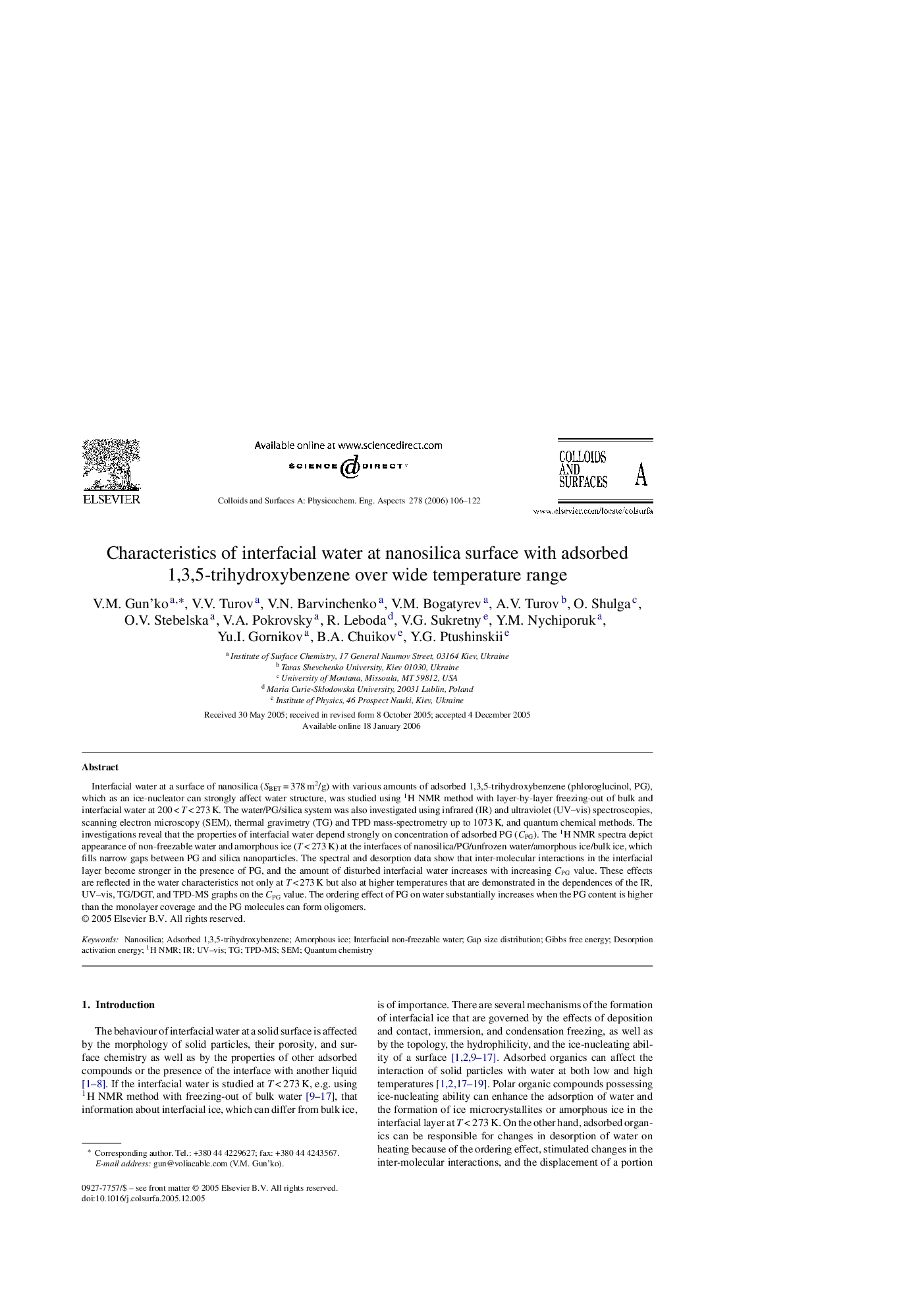| Article ID | Journal | Published Year | Pages | File Type |
|---|---|---|---|---|
| 598509 | Colloids and Surfaces A: Physicochemical and Engineering Aspects | 2006 | 17 Pages |
Interfacial water at a surface of nanosilica (SBET = 378 m2/g) with various amounts of adsorbed 1,3,5-trihydroxybenzene (phloroglucinol, PG), which as an ice-nucleator can strongly affect water structure, was studied using 1H NMR method with layer-by-layer freezing-out of bulk and interfacial water at 200 < T < 273 K. The water/PG/silica system was also investigated using infrared (IR) and ultraviolet (UV–vis) spectroscopies, scanning electron microscopy (SEM), thermal gravimetry (TG) and TPD mass-spectrometry up to 1073 K, and quantum chemical methods. The investigations reveal that the properties of interfacial water depend strongly on concentration of adsorbed PG (CPG). The 1H NMR spectra depict appearance of non-freezable water and amorphous ice (T < 273 K) at the interfaces of nanosilica/PG/unfrozen water/amorphous ice/bulk ice, which fills narrow gaps between PG and silica nanoparticles. The spectral and desorption data show that inter-molecular interactions in the interfacial layer become stronger in the presence of PG, and the amount of disturbed interfacial water increases with increasing CPG value. These effects are reflected in the water characteristics not only at T < 273 K but also at higher temperatures that are demonstrated in the dependences of the IR, UV–vis, TG/DGT, and TPD-MS graphs on the CPG value. The ordering effect of PG on water substantially increases when the PG content is higher than the monolayer coverage and the PG molecules can form oligomers.
